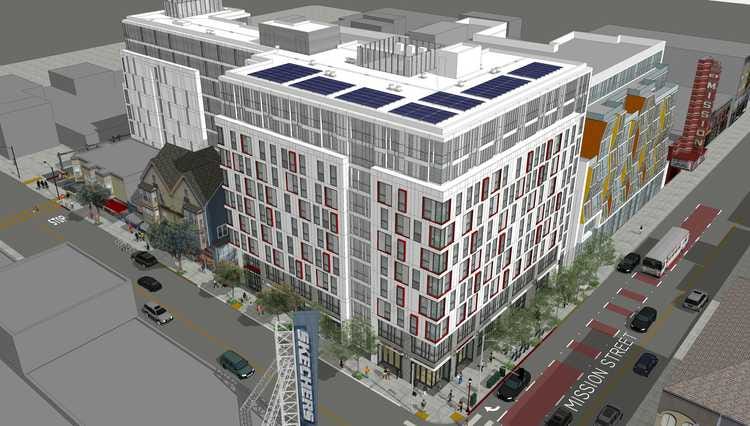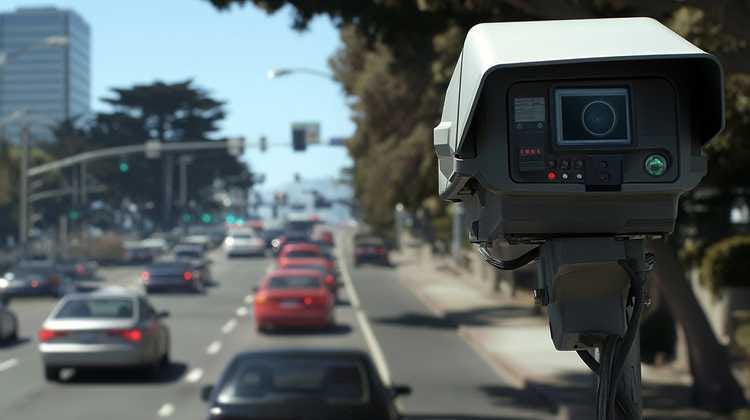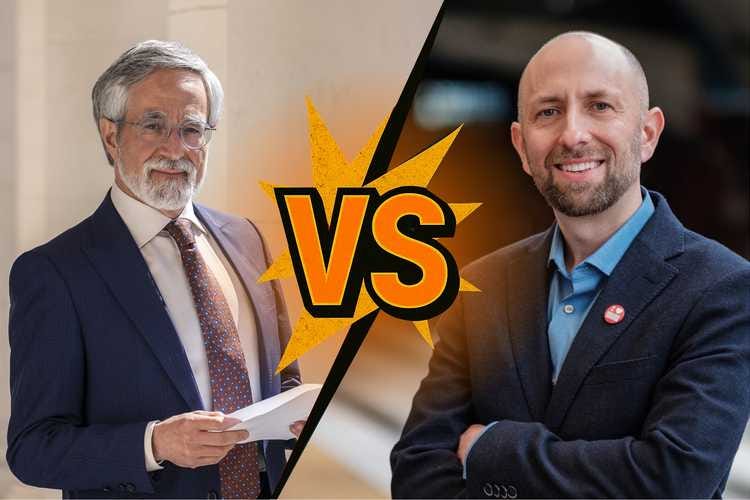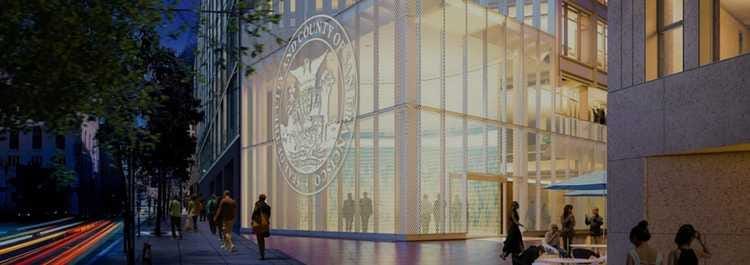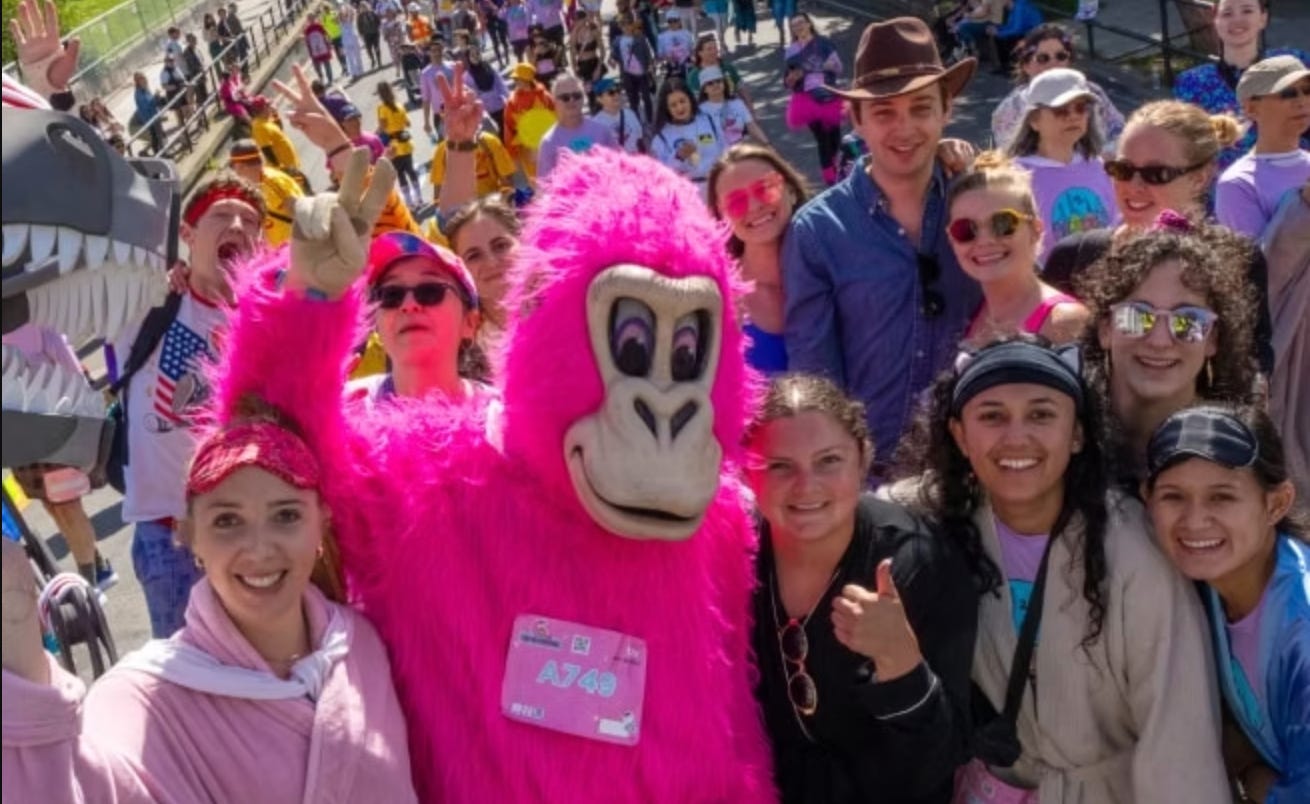After 9 years of delay, 181 new homes approved at burned-out Mission site
PLUS: Peskin's team takes over Engardio recall amid internal disputes
What You Need To Know
Here’s what happened around the city for the week of May 11, 2025:
- After 9 years of delay, 181 new homes approved at burned-out Mission site
- Only Half of SF’s Speed Cameras Are Operational Amid Delays
- Peskin's team takes over Engardio recall amid internal disputes
- SF Planning Director Rich Hillis stepping down
Recent & upcoming openings:
- Pacifico’s tropical vibes pour into former Andina space
Your Action Plan:
- Don your finest costume for Bay to Breakers
After 9 years of delay, 181 new homes approved at burned-out Mission site
Published May 16, 2025
Ten years ago, a deadly fire destroyed this Mission building and killed one resident. Now, 181 new homes will rise in its place. After nearly a decade of delays, San Francisco has finally approved new homes at 2588 Mission — despite angry opposition from a couple loud voices who want no change at all.
The Facts
On Thursday, the San Francisco Planning Commission approved a 10-story, 181-unit apartment building at 2588 Mission Street. The site has sat vacant since 2015, when a fire killed one person and displaced dozens of tenants and small businesses. The new project includes 17 below-market-rate homes and 164 market-rate homes. The Planning Commissioners approved the project in a 4–3 vote, noting that the city had no legal grounds to block it under state housing law.
The Context
This lot has been empty for nearly 10 years, even as San Francisco face a severe housing shortage. Anti-development activists in the Mission, like "United to Save the Mission," fought to keep the site vacant rather than permit a home builder to replace the empty lot with new homes. There's a long history of anti-development activism in the Mission based on the false belief that new homes cause gentrification, drive up rents, and displace existing residents. In reality, new homes help meet demand and lower prices for everyone, while also ensuring people have access to high quality housing.
State housing laws like the Density Bonus and SB 330 limit the city’s ability to reject code-compliant housing, especially on underused land like this. This project meets all the requirements and has been through multiple rounds of public hearings and revisions. The Planning Commission’s approval is a victory for state housing laws and a step toward addressing San Francisco’s housing crisis.
This building will provide 74 two-bedroom homes and 107 1-bedroom homes, with 17 of those homes set aside as subsidized low-income housing. The project also includes ground-floor retail space, over 100 bicycle parking spots for residents, and solar panels on the roof.
The GrowSF Take
This is exactly the kind of housing San Francisco needs — dense, near high quality transit, and filling an empty lot. The fire was tragic, but we shouldn’t let the memory of loss be weaponized to block new homes forever.
Opposition to this project wasn’t about justice or affordability — it was about stopping any new housing in the Mission, no matter the cost. That’s unacceptable. We need to say yes to homes, yes to neighbors, and yes to healing the wounds of the past by building a better future.
We applaud the Planning Commission for doing the right thing, even in the face of loud opposition. 181 new families will soon call the Mission home — and that’s something to celebrate.
Only Half of SF’s Speed Cameras Are Operational Amid Delays
Published May 15, 2025
San Francisco’s speed camera rollout is stalled due to permitting issues with PG&E and an inflexible bureaucracy waiting for the perfect moment.
The Facts
As of mid-May, only 18 of 33 speed cameras are operational, nearly two months after the program's launch. The delay comes down to bureaucratic minutiae: the San Francisco Public Utilities Commission (SFPUC) believes it should be able to get electricity at wholesale rates, rather than retail rates (what you and I pay). Typically, PG&E only provides wholesale rates to large connections, not to dozens of small connections like the speed cameras. That has led to PG&E negotiating a new permitting process with SFPUC, which is taking a long time.
But in the meantime, the 18 functional cameras are still only issuing warnings because the SFMTA wants to enable all of them at once, regardless of how long that takes.
The Context
San Francisco initiated a five-year speed camera pilot program under Assembly Bill 645, aiming to reduce traffic fatalities by automatically ticketing drivers exceeding speed limits by 11 mph or more. The program mandates a 60-day warning period before issuing fines. However, the city plans to start issuing citations only after all 33 cameras are operational and have completed their respective warning periods. There is no technical or legal reason that the existing operational cameras cannot start issuing speeding tickets now.
Delays stem from the need to establish a new permitting process with PG&E, as this is the first time such a system is being implemented in California. PG&E has agreed to provide exceptions to existing rules to move this project forward, but they are moving slowly because they hope to design a process to make future installations faster.
As of May 15, 2025, six people have been killed in traffic incidents this year, including a recent hit-and-run in the Bayview that killed a 47-year-old man. Speeding is the number one cause of traffic deaths in San Francisco.
The GrowSF Take
This bureaucratic delay is ridiculous and unacceptable. While we understand that PG&E needs to negotiate new rules for a new connection type, that shouldn't hamper the installation of these cameras as a one-time exception. After all, they've done it for the first 18, why not the next 15?
And the SFMTA's decision to wait for all cameras to be fully operational before issuing citations is misguided. Instead of adapting their operational policy to fit with reality, they're sticking with their original, outdated, and overly optimistic plan. Let's get the operational cameras issuing speeding tickets now, rather than waiting for the perfect moment that may never come.
Peskin's team takes over Engardio recall amid internal disputes
Published May 14, 2025
Vin Budhai, the public face of the campaign to recall Supervisor Joel Engardio, has abruptly resigned just days before the May 22nd signature deadline, citing internal disagreements over campaign tactics. Close allies of Aaron Peskin have reportedly taken over the campaign.
The Facts
Vin Budhai, a key organizer of the recall campaign against San Francisco Supervisor Joel Engardio, resigned just days before the May 22 deadline to submit the 10,000 signatures required to qualify for the ballot. Citing "creative and strategic differences" regarding the use of paid signature gatherers, Budhai handed over the reins to longtime Aaron Peskin ally and staffer Jamie Hughes. Other Peskin staffers, Otto Pippenger and Forrest Cameron, also have key roles in the recall.
The Context
The recall effort against Supervisor Joel Engardio stems from his support of Proposition K, which converted a 2-mile stretch of the Great Highway into Sunset Dunes Park. Proposition K passed citywide with over 54% support but faced local opposition in the Sunset and Richmond districts.
The park opened on April 12, 2025 and, despite worries about worsening traffic, an investigation by the Standard found that a typical commute actually happened a few minutes faster than normal, though some drivers measured an extra five to ten minutes.
The recall campaign has until May 22, 2025 to turn in at least 10,000 valid signatures to qualify for the ballot. After turning in the signatures, the Department of Elections will take a random sample of the signatures to verify that they are valid. If the sample indicates they have at least 110% of the required signatures, the recall will qualify for the ballot. If it's between 90% and 110%, the Department of Elections will check every signature. If it's below 90%, the recall will not qualify.
The GrowSF Take
The replacement of Budhai with Peskin's team indicates two things to us: 1) The recall is likely to qualify and 2) Peskin wants to take credit for it. Even out of office, Aaron Peskin is still a powerful force in San Francisco politics.
SF Planning Director Rich Hillis stepping down
Published May 13, 2025
Rich Hillis, San Francisco’s Planning Director, will step down at the end of the summer. His departure opens the door for a new leader who could accelerate housing approvals and overhaul the city’s sluggish permitting process.
The Facts
San Francisco Planning Director Rich Hillis will leave his role by the end of summer, according to reporting by the Chronicle. Hillis was appointed in 2020 under Mayor London Breed and oversaw battles with state housing regulators over permit slowdowns and zoning compliance among a total collapse of building in the City.
The Context
For decades, the Planning Department has been criticized for permitting delays and red tape that contributed to San Francisco's housing crisis. Hillis’s leadership coincided with a period where San Francisco had the slowest housing approval timeline in the state—averaging over 600 days for a multi-family permit, and over 800 for a single-family home permit. While Hillis isn't uniquely to blame for this, he also hasn't gotten us out of it.
The Planning Department is a powerful agency that controls what gets built in San Francisco. In recent years, it has been under intense pressure from state agencies, housing advocates, and home builders to streamline approvals and rezone the city to allow for more housing. The state’s Department of Housing and Community Development has been keeping a close eye on San Francisco’s progress in meeting its housing goals, and has threatened to impose penalties if the city fails to comply with state housing laws.
In his campaign, Mayor Lurie promised to fix the city’s broken permitting process and hold departments accountable for delays. The next Planning Director will play a critical role in implementing the Housing Element, a state-mandated plan to build 82,000 new homes by 2031.
The GrowSF Take
By all accounts, Director Hillis is likeable and competent. We hold him in high regard, but we think he could have done more to push back against the anti-housing forces inside the department and didn't do enough to fix the Planning Department's broken processes. The Planning Department is still one of the slowest in the state, and it is still a major obstacle to getting new homes built.
The next Planning Director should be someone willing to ignore politics and do the job they were hired to do: get homes built. This means abolishing things like the "Residential Design Advisory Team" (RDAT), which imposes itself on all building designs and often finds itself in direct opposition to architectural freedom and cost-conscious design, but which has no statutory authority to do so. It also means firing middle-management who are more concerned with fighting change than with getting homes built. And it means working with the Mayor's office to streamline the permitting process and cut through the red tape that has plagued the department for years.
If you think you'd be great for the job, or know someone who is, email us!
Recent & upcoming openings
A great city is constantly changing and growing, let’s celebrate what’s new!
Pacifico’s tropical vibes pour into former Andina space
WHERE: 205 Franklin, in the SF Jazz building
WHEN: Open for Dinner Thurs-Sun, Lunch starting May 22, Brunch starting June 7
Pacifico, a popular pop-up, is moving into a permanent home at SF Jazz, taking over from Andina. According to Eater SF, the restaurant will focus on brunch (starting June 7) and dinner (open now!) with a menu that’s “fresh, Latin, and full of tropical vibes.”
Pacifico is run by husband-and-wife duo, Daniel Morales Vallejo and Laura Gelvez. Daniel runs the kitchen and takes inspiration from his mother’s kitchen in Colombia, his formal training in Peru, and his experience at The Progress. Try the Spicy Guava Octopus and Halibut Ceviche.
Your Action Plan
Don your finest costume for Bay to Breakers
A favorite San Francisco tradition is happening tomorrow - Bay to Breakers! It’s time to pull your gorilla suit out of storage, dust off your green man bodysuit, cover yourself with glitter, and do some day drinking! Maybe some running, too.
If you haven’t experienced Bay to Breakers before, it’s an all-morning party alongside a 12k (or 15k, for the more dedicated) race that starts at The Embarcadero (Bay) and ends at Ocean Beach (Breakers). It’ll be the most fun you’ll ever have on a run.
See you at 8am!



